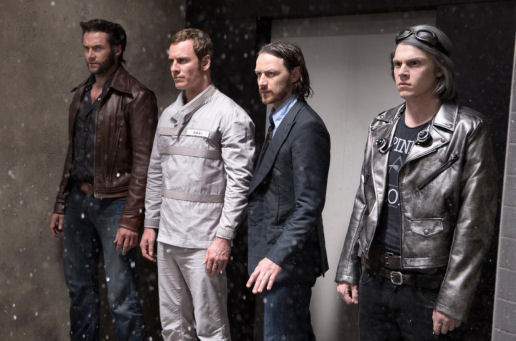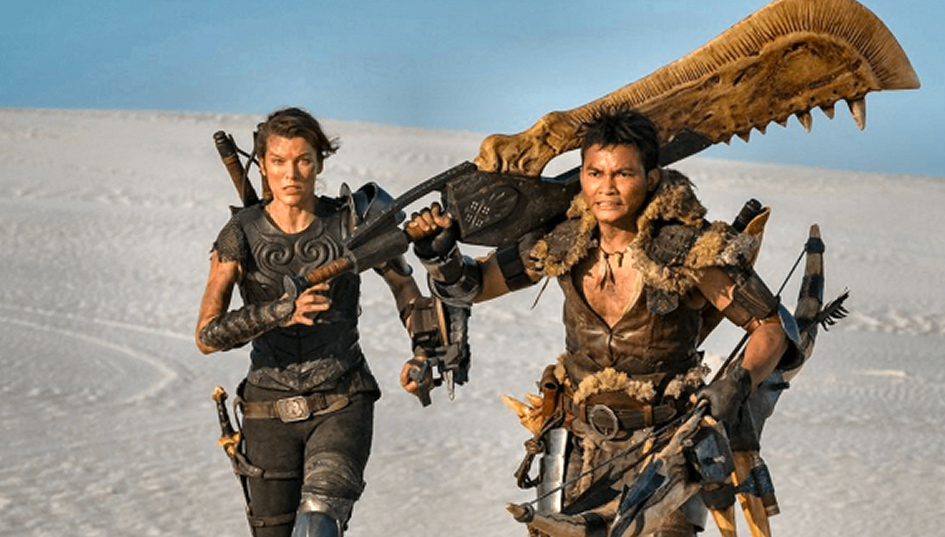Before we begin, I have to tell you—in the interest of full disclosure—that I grew up a Superman fan. Marvel’s “Silver Age,” Spiderman, the Fantastic Four, the X-Men and whomever else, didn’t come along till I was in high school. That doesn’t mean I can’t appreciate Marvel’s creations (in those days, mostly Jack Kirby, Stan Lee and the like, then Len Wein, Marv Wolfman, Gene Colan and so on); but I’m not as invested in them as some comic fans might be, especially younger fans. I grew up on Superman—and the “Big Red Cheese,” Captain Marvel. Later, I grew to appreciate the characters in the X-Men, the Fantastic Four, Spiderman, Iron Man, Thor, the Hulk and everyone else. And frankly, lately it’s been hard to get out and find comic books; my favourite comic store closed a couple of years ago. So I might make a mistake now and again when I talk about Marvel’s franchise characters because I’m out of date. If I do, please forgive me.

As the newest entry—but certainly not the last—in Marvel’s longest-running movie franchise the X-Men (I believe this is the fifth specifically X-Men movie, although there was one titled X-Men Origins: Wolverine, which I’m not counting here, since it was only about Wolverine.) This won’t be the last X-Men movie, either, as X-Men: Apocalypse has been announced for 2016; good news if you’re an X-Men fan. (For those SF/F types who have been living in outer space and don’t know who the X-Men are, they’re mutants: Homo sapiens with that next evolutionary step [the X-factor?] in DNA that makes them as far above us as we were above Homo sapiens neanderthalensis. (Taxonomists are divided about whether the Neanderthals can be considered “archaic” humans or a different species, as Homo neanderthalensis.) The mutant gene expresses itself in different ways for each mutant; the mutants important to the story will be described [short description] as we go along.) Of course, I’ve always thought Marvel’s mutant-human conflict was a bunch of… hmm, let’s say “bushwa.” Homo sapiens didn’t wipe out the Neanderthals; we supplanted them, we outbred them—and don’t think there wasn’t a major amount of inbreeding while we shared the planet. (The male H. sapiens has a long tradition of “nailing” anything that has an appropriate receptacle, as well as any number of inappropriate receptacles. I neither approve nor disapprove; it’s just the way things are.)
The movie opens in the future; you can tell it’s the future because a) Professor Xavier (Patrick Stewart) has a floating wheelchair; b) Storm (Halle Berry) has a haircut; and c) Logan/Wolverine (Hugh Jackman) has grey at his temples. We find out that mutants are systematically being hunted down and either imprisoned or killed—we’re shown a long line of both people and mutants shuffling along à la Metropolis (the Fritz Lang movie) and are told that mutants, along with those humans foolish enough to sympathize and try to help or hide them, are being hunted by machines—anthropomorphic robots—called “Sentinels,” and we find that these Sentinels (composed of some space-age bafflegab, like Unobtainium or Bolognium) have the ability to morph to counter any mutant’s power. We watch as Sentinels attack a small group of mutants, killing some, while several escape using some kind of portal created by one of them, Blink (Bingbing Fan) while another—Kitty Pryde (Ellen Page), who is doing something involving creating what looks like a blue electrical field at another mutant’s temples—taunts the Sentinels, telling them they’re too late. Then Pryde and her group disappear.

We find out that this whole future came about because of Mystique (now Jennifer Lawrence, originally Rebecca Romijn—and before we get into the whole “who’s a better Mystique” argument, remember that J-Law also played her in X-Men: First Class), who was originally called Raven when she met Charles Xavier when they were very young. It appears that this whole anti-mutant thing was started by a man named Trask (Peter Dinklage, of Game of Thrones fame), back in the ‘70s, who was certain that the mutants would do to H. sapiens what we did to H. sapiens neanderthalensis, and who had a plan for anti-mutant robots that would seek out and shoot mutants before that could happen. While he was trying to sell this plan to the US government, Raven, now calling herself Mystique—I think much of this was said in X-Men: First Class, though I found that a particularly forgettable movie—decided on her own hook (very much influenced by Eric Lensherr, or Magneto) to kill Trask.

She did so, and was captured by Trask’s assistant, Stryker (Josh Helman, playing a young Brian Cox, from X-Men 2) and, using her DNA—the “key to all mutant DNA”, the Sentinels were given the ability to morph to negate any mutant’s powers (Confused yet? Well, don’t be—all you have to do is watch X-Men, X-Men 2: X-United, X-Men: The Last Stand and X-Men: First Class as well as the two separate Wolverine movies, and you’ll be mostly caught up); this led to the horrible future we are looking at. Kitty Pryde (Ellen Page) has the ability to send someone back in time for a limited stretch, but only for a week or two, otherwise their mind would snap. Professor Xavier and Magneto decide that they need to stop Mystique from taking that first fatal step (her first murder) and that will change everything. But neither of them can take the trip back to 1973; it appears the only one who could possibly go back that far would be—got it yet? Wolverine!
It appears that Wolverine’s mutant healing abilities allow him to heal not only his body—we saw, in X-Men: The Last Stand, that Jean Grey (Famke Janssen) as Phoenix shredded his physical body, but he was able to regenerate almost instantly—but also his mind; he’s the only possible candidate for this time travel. He must go back to his body of 1973 and convince Charles and Eric to work together (which won’t be easy, as they are enemies at this point) to stop Mystique from killing Trask. (As Doctor Who fans might say, there’s something a bit “timey-wimey wibbly-wobbly” about future Wolverine; if he’s an unknown number of hundreds of years old and regenerates indefinitely and almost instantly, how come he’s got grey hair on his temples? Wouldn’t the hair follicles regenerate as they’ve been doing?) So Logan/Wolverine takes the Pryde ride, and he’s warned to keep his temper and emotions in check or he could be dropped back to today/the future. Excuse me? The most excitable and grouchy X-Man ever, and you want him to calm down?
In order to bring Charles and Eric together as friends again, Logan has to get Eric out of the most secure prison in the US—a totally concrete (cement) cell five stories under the Pentagon! (I hate to be a pain in the… but doesn’t most concrete have rebar—reinforcing bar of metal—in it? Otherwise, a 5-story prison would probably collapse under its own weight—but then, I’m not an engineer.) Anyway, to do so Logan has to recruit Quicksilver (Evan Peters) for the mission, which leads to one of the most fun CGI sequences in a movie full of CGI.

Another aside here: it would be impossible to make any kind of an X-Men movie without copious amounts of CGI; certain things can’t be practical (real) effects. I usually decry CGI for CGI’s sake, but in most X-Men movies, the CGI does serve the story. In this sequence, it’s used mostly for what Barry Weiss (TV’s Storage Wars) calls “gits and shiggles.” You’ll laugh when you hear the song that Quicksilver puts on his Sony Walkman just before the action starts. If I have a quibble about this sequence, it’s the relatively minor one that actual physics is ignored: if you read John D. MacDonald’s book The Girl, The Gold Watch and Everything, you’ll notice that in his book when time slows to nearly nothing, there is a doppler shift for both light and sound; and items in “real time” are extremely hard to move, which makes a certain amount of sense. But then, if I’m going to quibble about science, I wouldn’t be reviewing this movie, would I? Because so many things that the mutants do are pretty much impossible in real-world terms, scientifically. So let’s not go there. The CGI in this movie is sometimes very impressive.

As I said earlier, the previous movie (X-Men: First Class) was, for me, rather forgettable; I have to say that this movie is not. In many ways, it’s much more fun than X-Men: Last Stand was; it’s not as grim or as dark as that particular film. Yes, the future part is very dark, not only for X-Men, but for any H. sapiens that the Sentinels determine might conceivably—thanks to their DNA scans—have mutant children or grandchildren. But there’s some good acting here from various people: I was impressed by Hugh Jackman, James McAvoy as the younger Charles and Michael Fassbender as the younger Eric and—Jennifer Lawrence’s athletic ability (using wires or not) as Raven/Mystique was impressive; she reportedly worked out for several hours a day to get into shape for this movie, more than she did for the Hunger Games movies. (And it can’t have been comfortable doing that stuff essentially naked. Yes, there are prosthetics over the “naughty bits,” but I’ll bet there were a few times the glue had to be replaced. And reportedly her “bum” prosthetics had to be replaced as the exercise tightened her glutes.) Oh, and her colour is a much lighter blue than Rebecca’s, plus her “scales” are much more subdued than the original. However, I don’t remember Romijn as being quite so athletic as Mystique.
But once the movie is done and you start thinking hard about the sequences of events you’ll probably find, as I did, that there are a few timey-wimey moments where you can’t quite justify the script; but in a movie of this length (at two hours and thirteen minutes) that’s not a major problem. Of course, I can’t—because, spoilers!—go into the resolution of the movie, so there may be a couple of things at the end that are (in my opinion) thrown in essentially for “feelgood” reasons, but overall I thought this was a very fun and well-done film. I saw it in 3D, which really enhanced the whole movie, especially the Quicksilver sequence.
This was, of course, directed by Bryan Singer, who did the first one as well as X-Men: First Class—and I think he’s also directing the X-Men: Apocalypse movie. Reportedly, the Apocalypse movie will feature the cast of younger X-Men characters/actors, like McAvoy, Fassbender, etc. I haven’t heard anything about plot yet. I’ll go to that one, too. So far, I haven’t been in love with any of the X-Men characters enough to own any of the movies—but Wolverine is the one I like best, and this is one of the best ensemble movies in my opinion.
If you have any comments on this week’s entry, you can either register here (if you haven’t already—it’s free, and only takes a moment)—or you can comment on my Facebook page, or in the several Facebook groups where I publish a link to this column. Your comments are all welcome, and please don’t feel you have to agree with me to post a comment; I may not agree with you, but if we all agreed the world might be terribly bland, no? My opinion is, as always, my own, and doesn’t necessarily reflect the views of Amazing Stories or its owners, editors, publishers or other bloggers. See you next week!











Recent Comments